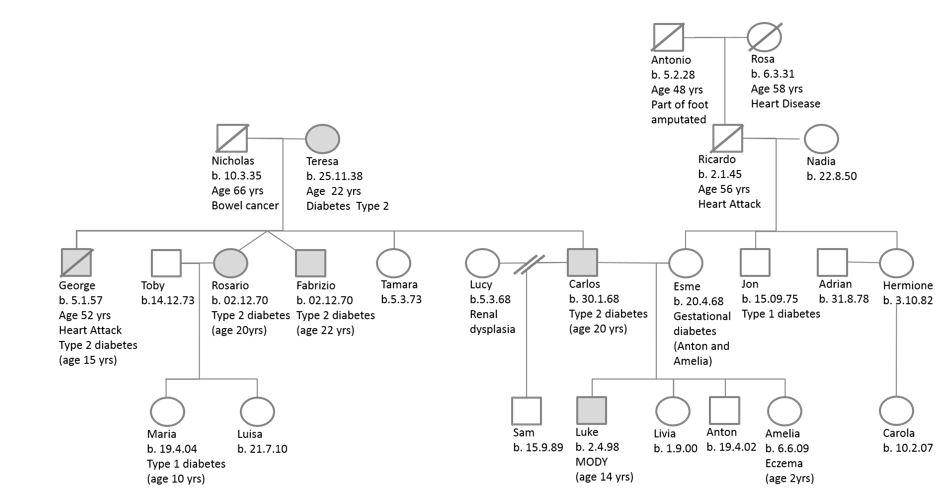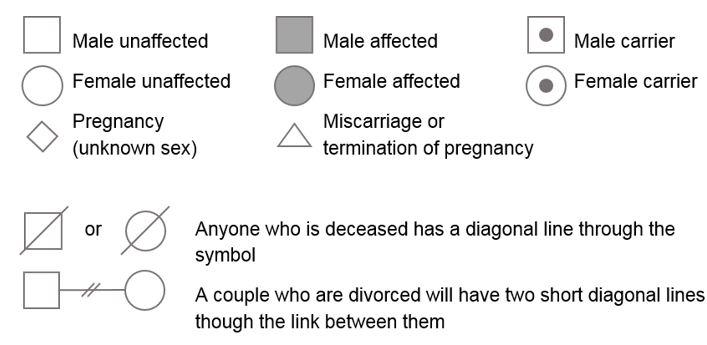Luke was diagnosed at the age of 14 years old, so it was important when doing this family pedigree to work out when each person was diagnosed with type 2 diabetes mellitus. This then helps to distinguish between the different types of diabetes mellitus. Both sides of Luke’s family have relatives with different types of diabetes mellitus.
Luke’s mother had gestational diabetes mellitus when pregnant with the youngest two siblings, whilst her brother, Jon (Luke’s uncle) has Type 1 diabetes mellitus. It is on his dad’s side of the family though, where there is more type 2 diabetes mellitus; however only a few (shaded in grey) were diagnosed at an early age, before the age of 25. Luke’s grandmother and his dad, his brother and the twins also have an early onset type 2 diabetes mellitus.
This suggests that there is a pattern of inheritance and therefore there is a genetic component in succeeding generations. MODY is known to be a single gene defect inherited as an autosomal dominant gene in which case all generations will have at least one parent with MODY. However, epigenetic changes in the genes could have caused some of the changes in Luke’s family through:
- Changes to the DNA: By adding a methyl group (methylation), histone modification and/or micro RNA changes, a number of epigenetic changes can develop, both activating and deactivating genes.
- Activation or de-activation of genes: This can occur as the child grows up in response to different stimuli. These can include virus infections, changing the diet, changing the intestinal flora, exposure to environmental chemicals and the use of antibiotics.
There is increasing evidence that the epigenetic changes that occur in an individual’s parents or even grandparents may in some cases affect the child (Bohacek and Mansuy, 2013).
References and further reading
Bohacek, J. and Mansuy, I.M. (2013) ‘Epigenetic inheritance of disease and disease risk’, Neuropsychopharmacology, 38(1): 220–36.
Diabetes Research department and the Centre for Molecular Genetics (2015) Genetic Types of Diabetes Including Maturity-onset Diabetes of the Young (MODY). Available at: www.diabetesgenes.org/
Diabetes UK website – www.diabetes.org.uk/Guide-to-diabetes/What-is-diabetes/Other-types-of-diabetes/MODY/
Timsit, J., Bellanne-Chantelot, C., Dubois-Laforgue, D. and Velho, G. (2005) ‘Diagnosis and management of maturity-onset diabetes of the young’, Treatments in Endocrinology, 4(1): 9–18.


